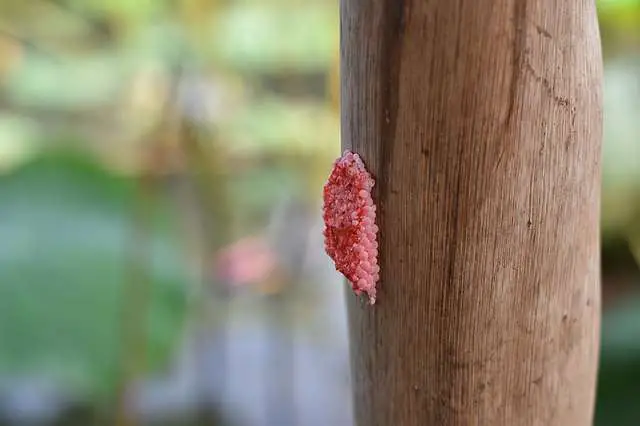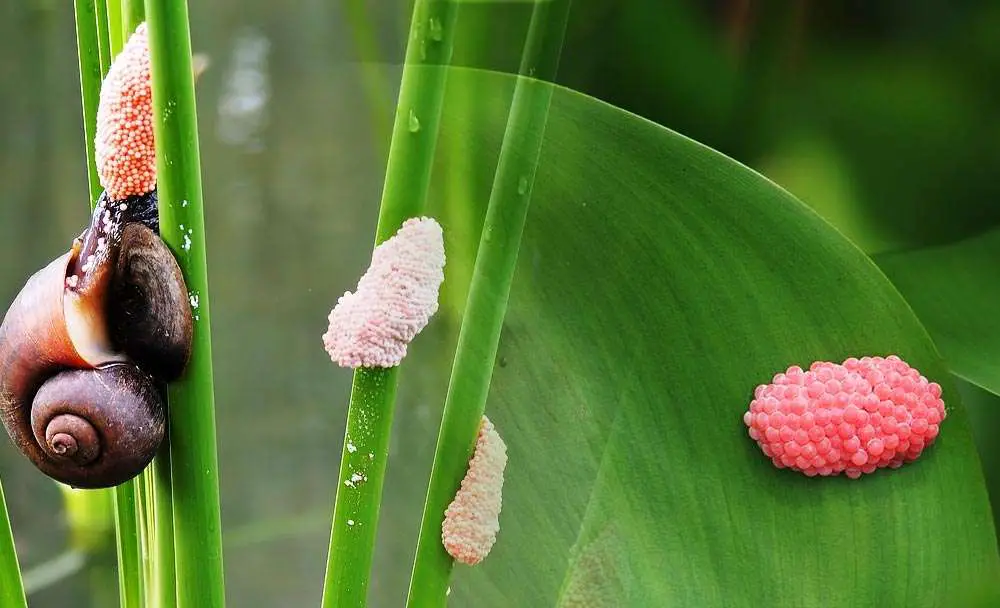Are you surprised you found snail eggs in your aquarium, even though you didn’t put them there?
Or are you wondering how Snail eggs got to your aquariums? Or, you put a couple of snails in your aquarium, and they seem to have reproduced a lot of eggs.
Whatever the situation, this blog post will discuss all you need to know about aquarium snail eggs and how to care for them or eliminate them from your tank.
Snails are prodigious egg producers; they can become a problem if care is not taken.
I will also discuss their appearance, gestation period, and other things you need to know about Aquarium snail eggs.
Recognizing Aquarium Snail Eggs
There are different types of Snail eggs, depending on the snail species.
A clutch of snail eggs is a cluster of eggs around 0.34 cm per egg.
If you don’t look carefully, you may not even notice them until they hatch.
The whole clutch in a gelatinous sac may not be bigger than 0.64cm.
It can be challenging to notice that you may have inadvertently brought them in by introducing driftwood or other decorations.
How Do Snail Eggs Enter the Aquarium

And if you have snails as pets in your aquarium, they may have laid eggs under leaves or rocks or even attached them to the aquarium glass.
Not all snails lay eggs as often, though. Rabbit and Assassin snails don’t lay eggs as often.
If you find a lot of unwanted snail eggs in your aquarium, there are things you should know before making a decision.
Benefits of Aquarium Snail Eggs
There are two main benefits to having snail eggs. Let’s look at them:
- They can act as food for your fish:
Some species of Fish like Loaches, Catfishes, and Goldfish feed on Snail eggs.
You should note that fish that feed on Snail eggs will also have an appetite for other fish in the tank.
To avoid that, you should make sure you have a large tank.
- Snail eggs eventually turn to snails.
And Snails are good tank cleaners, as they will gobble up food leftovers, other fish wastes, and algae.
Some snails, like the Assassin snail, also prey on other snails.
The Disadvantage Of Aquarium Snail Eggs
It can be tough to control infestation or the growth of snail eggs in the aquarium.
Considering they are always tricky to see, you won’t know until it’s too late when you will have many snails in your aquarium.
While Snails can help clean up waste in the tank, you should also know that they release waste themselves, and if there is a lot in your tank, that can be a problem.
How Do Snails Reproduce?
Snails reproduce in two ways – laying eggs or carrying them internally.
You will not see the eggs for the ones that carry them internally, so we will talk about the ones that involve laying eggs.
Snails lay eggs on rocks, under leaves, plants, and aquarium glass.
The species that lay eggs are Nerite Snails, Ramshorn snails, Mystery Snails, etc.
Snails reproduce in three ways.
- Asexual:
They reproduce without male fertilization, although this reproductive system will produce only females.
Asexual reproduction in snails is called partial clone or parthenogenesis.
- The traditional male/female breeding:
This reproduction needs both male and female snails. The female can lay more than 200 eggs.
The number can be so much that it can sometimes take the female 1 to 3 months to lay all the eggs.
The eggs will take between 1 and 5 weeks to hatch. Snails that practice this includes the Assassin snail, Rabbit snail, and Mystery snails.
- Hermaphrodite:
Hermaphrodite Snails can choose and switch their gender.
In short, the Snail can lay the egg as a female and then fertilize it like a man.
Examples of snails that do this are Pond Snails, Bladder Snails, and Ramshorn snails.
How To Control Snail Eggs in an Aquarium
Habitat
If you are willing to keep the aquarium snail eggs, then there are things you need to know and conditions to meet.
The first thing to do is to ensure you have driftwood, rocks, plants, and places for the clutches to hatch.
They don’t need any complex filtration system, although you will need to filter when they hatch into snails.
When it comes to snails, you may have to control the nitrate or ammonia levels.
Water
Snail eggs thrive in warm water. It helps in breeding and makes the eggs hatch faster.
You should set temperatures between 65 F and 80 F.
If you want to manage the number of eggs, you should lower the temperature, although you must consider other animals and plants in the aquarium.
Snail eggs thrive in alkaline water – as such, it’s best to keep them in alkaline water if you want to grow eggs.
On the other hand, if you don’t want the eggs to grow so much, you can keep the eggs in acidic water.
If you must keep snail eggs in acidic water, I advise you to consider the needs of your other aquarium species.
The ideal water conditions for your Snail eggs are pH levels of 7.0 to 7.5 and water hardness of 5 to 15.
Aquarium size
There is no ideal tank size for snail eggs. They will grow whether you put them in a small or large tank.
The only issue is when they overrun the tank, which becomes too small when all the eggs hatch.
Tank mates
The type of animals you house with snail eggs depends on your plan for the eggs.
To control their population, you can look for a predator as their tank mate. But if you want them to grow, you must avoid fishes that see them as food and go for others that don’t, like Tetras, Rasboras, etc.
Diet
Your snail eggs don’t need food. But if you want to reduce the population of your Snail eggs, you should reduce the amount of food you give your snails.
That means you also must reduce the food you give the fish in the tank and prune algae.
Conclusion
Snail eggs can show up in your aquarium whether you put them there or not. If you find them, you can leave them to become snails or control the population if you don’t want them.
They have their advantages and disadvantages; by now, you should know what to do with them.







